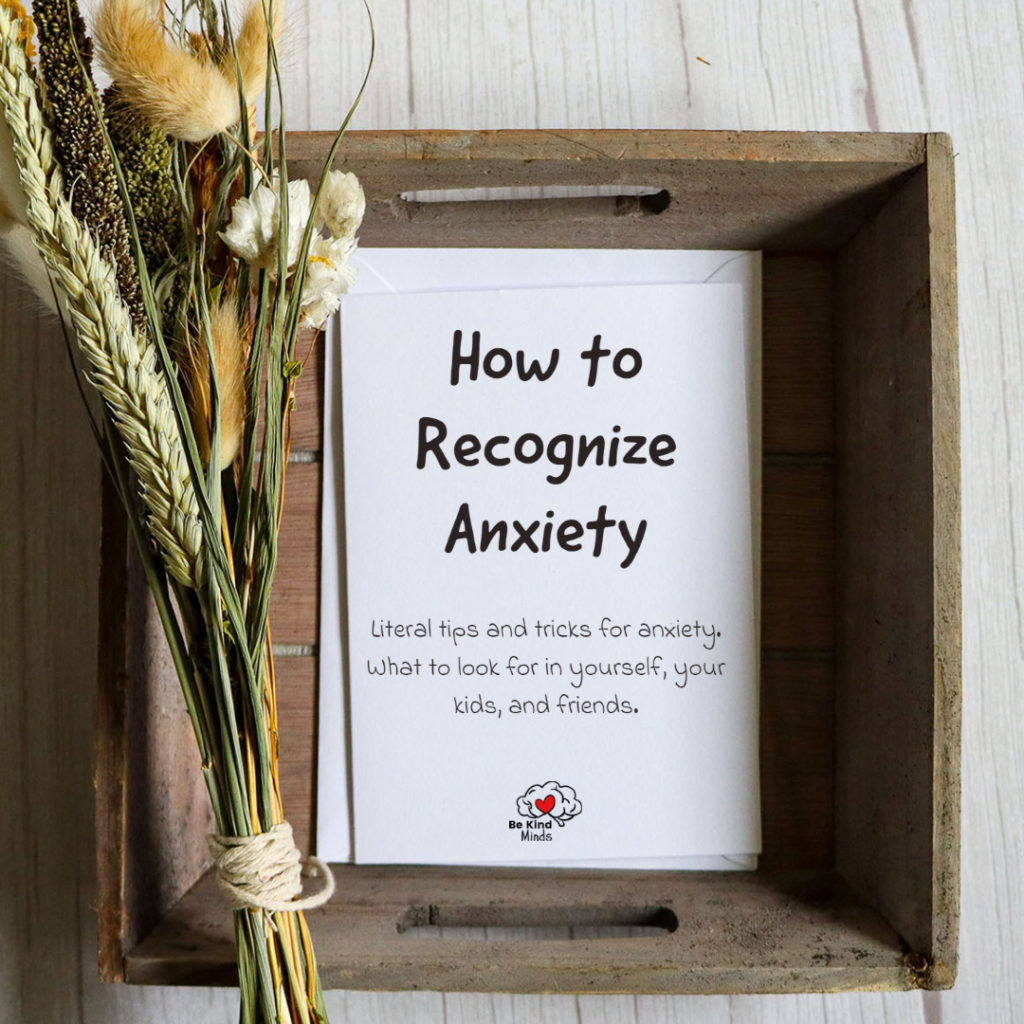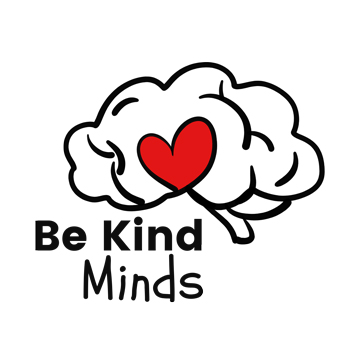I know it can be hard to tell the difference between normal worry and anxiety, but there are some signs that may help you recognize the difference. If your kids seem anxious, they may have trouble sleeping or eating, or they might get irritable or easily frustrated. You might notice them withdrawing from social activities like school and friends. They could also experience frequent stomachaches, headaches, dizziness, chest pain or difficulty breathing.
While we want our children to feel safe in an unpredictable world with all of its uncertainty at times it’s difficult for them to distinguish what’s real and what’s not when fear takes over their lives.
You may even feel similar to some of my friends who shared their desire to learn more about mental health, but struggle to understand when they have a challenging time relating to the behaviors from mental health conditions:


Anxiety disorders are the most common mental health condition in the United States, affecting 40million adults in the U.S. ages 18 and older. Anxiety disorders are easily treatable, yet only 36.9% of those suffering receive treatment. [source: ADAA]
What Anxiety Feels Like
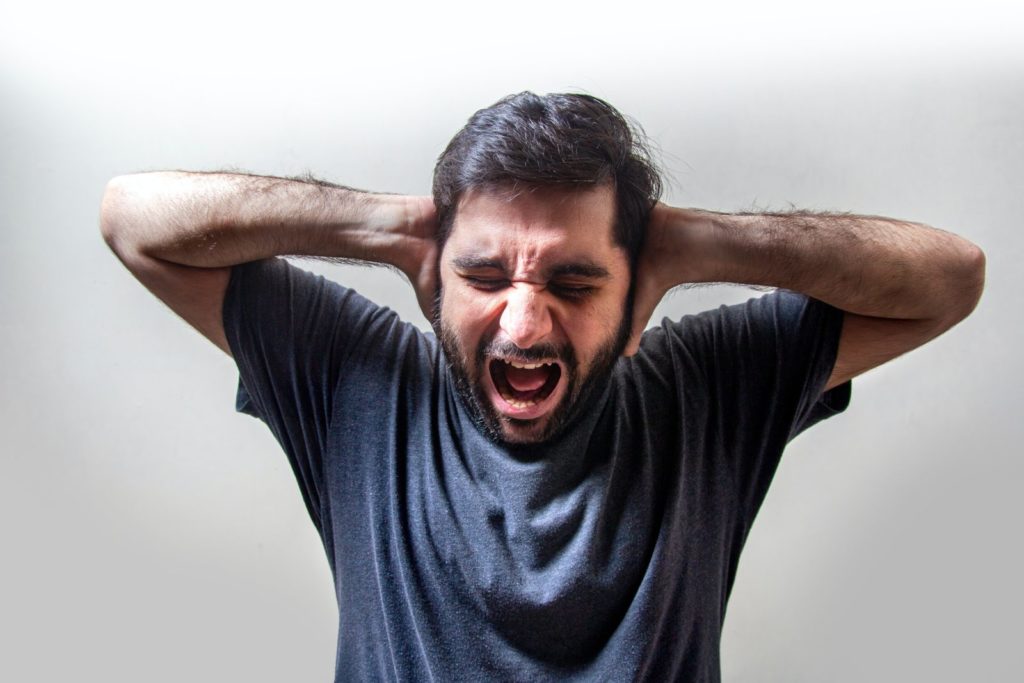
For me, anxiety feels like that panic you feel when you first think you lost your child in a large crowd. All the blood feels like it’s drained from your face and your heart is beating out of your chest.
The emotion is so overwhelming, you want it to stop but you don’t know how, and sometimes it feels like you’ve “searched everywhere” [for a solution to ease the panic] and it’s hopeless because it’s not just one moment and then it’s gone… anxiety can last all day, multiple days in a row, or even for weeks at a time.
Once the panic finally subsides, the relief is equal in measure to finally finding your child and recognizing that you never lost them to begin with.
Anxiety doesn’t make sense, it can be over the simplest “issue” that doesn’t appear big, but it feels HUGE. You understand the logic, but your body isn’t cooperating with what you ‘know’ in your mind is true.
Sometimes Anxiety turns into a panic attack, which can come over you all at once out of the blue, and there’s no obvious trigger as to why you’re feeling this sudden onset of extreme anxiety that feels more like a heart attack where it’s difficult to breathe.
“Anxiety can reach such intense levels that people experience a panic attack—sudden feelings of intense fear and worry combined with overwhelming physical symptoms, such as heart palpitations, chest pain, shortness of breath, dizziness, nausea, and more. Panic attacks tend to come on suddenly but can linger long after the initial stressful situation has passed.”
– Dr. Daniel Amen
I asked some of my friends to describe what anxiety feels like to them:



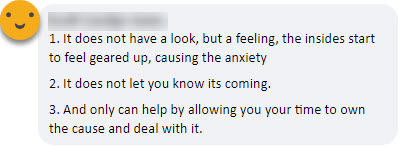

Other feedback from those struggling with anxiety in their life, collected from @MindForBetterMentalHealth Facebook page:

What Anxiety Looks Like
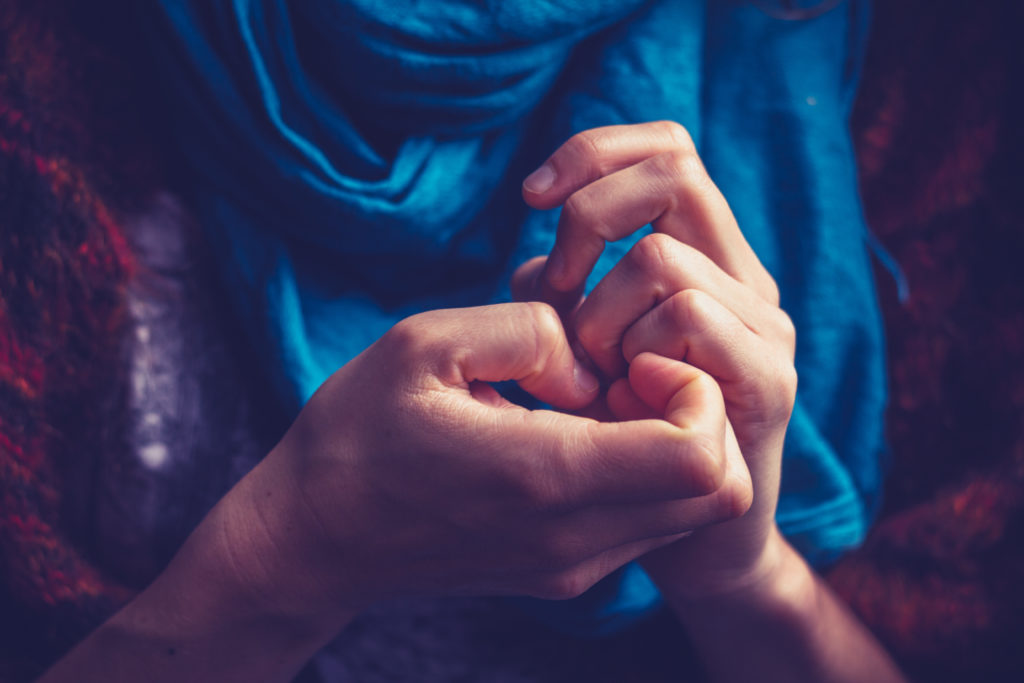
Anxiety will manifest its appearance differently for everyone, as the root cause for their panic or worry will be different. There are common patterns for how anxiety shows up… for children (and even adults), the signs can appear subtle like biting or picking their nails so you’ll see sores on their hands and they may appear often as ‘fidgety’… and sometimes the feelings cannot always be easily put into words so anxiety will show up as an emotional meltdown of anger or sadness.
People who are anxious often feel a need to go the extra mile in other areas of their life, such as being perfect spouses and parents. They already see themselves as not good enough so they’ll overcompensate by doing more work on tasks or goals than someone without anxiety would even think about tackling at all!
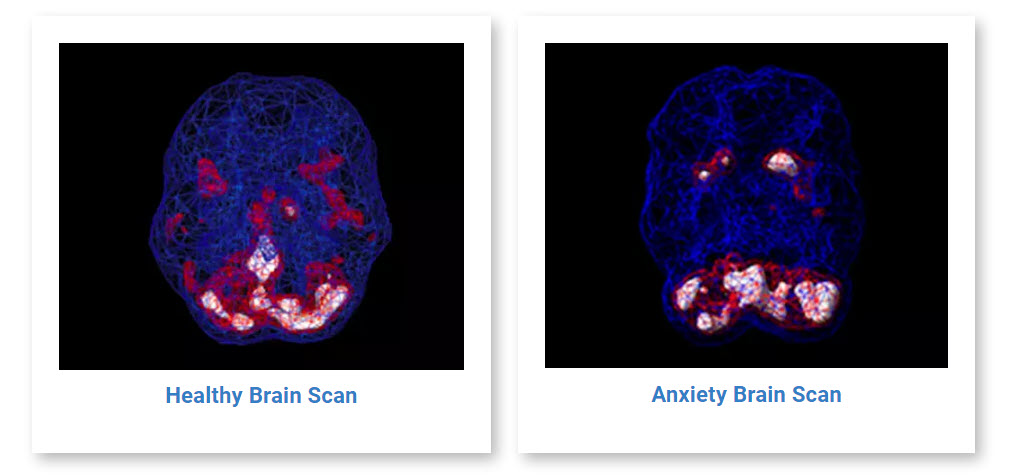
SPECT (single photon emission computed tomography) is a nuclear medicine study that evaluates blood flow and activity in the brain. Basically, it shows three things: healthy activity, too little activity, or too much activity. A healthy “active” scan shows the most active parts of the brain with blue representing the average activity and red (or sometimes red and white) representing the most active parts of the brain. In the healthy scan on the left, the most active area is in the cerebellum, at the back/bottom part of the brain. The scan on the right is an example of someone with Type 1: Pure Anxiety (see for more information on the 7 types of anxiety), which shows too much activity in the basal ganglia, which sets a person’s anxiety level on high.
– Dr. Daniel Amen
Pure Anxiety Looks Like:
- Frequent feelings of nervousness or anxiety
- Panic attacks
- Avoidance of people or places due to a fear of having anxiety or panic attacks
- Symptoms of heightened muscle tension (headaches, sore muscles, hand tremor)
- Periods of heart pounding, nausea, or dizziness
- Digestive upset that doesn’t ever go away, or frequently occurs (diarrhea, stomach aches, gas & bloating)
- Tendency to predict the worst
- Multiple persistent fears or phobias (such as dying or doing something crazy)
- Conflict avoidance
- All-or-nothing thinking
- Excessive fear of being judged or scrutinized by others
- Believing the worst will happen
- Overgeneralizing (making overall assumptions based on a single event)
- Being easily startled or a tendency to freeze in anxiety-provoking or intense situations
- Shyness, timidity, and getting easily embarrassed
- Biting fingernails or picking skin
- Compulsive actions (like washing hands over and over)
- Constantly or persistently seeking reassurance
Research has shown that anxiety has roots in biological issues (such as head injuries, hormonal imbalances, blood sugar issues, drug abuse, medication side effects, genetics, and more), psychological issues (such as experiencing emotional trauma), and social issues (such as stress from work, school, or home life).
It’s also worth noting that anxiety could just be one symptom of a much larger mental health condition, such as Autism, ADHD, Major Depression, PTSD, or other psychological conditions like Bipolar Disorder… consulting with your physician and keeping them updated on the progress of your loved one will help bring clarity. Most physicians will begin with treatment for anxiety & depression before entertaining the possibility of other diagnoses.
How You Can Help
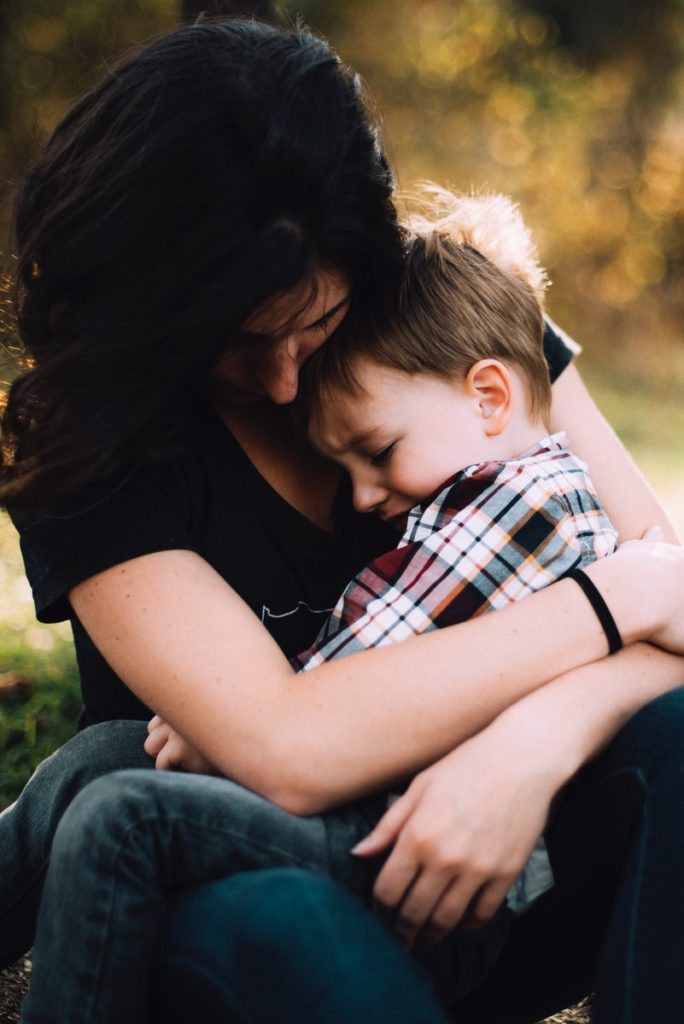
When responding to someone’s big emotions that don’t appear to fit in a reasonable way to the situation they’re reacting to, watch carefully the way you react in body language and words. In their heightened state of emotions your words, and even facial expression, could easily be interpreted in the wrong way.
You may even feel as if you’re walking on eggshells around them, which is a completely understandable feeling to have with someone who seems extra sensitive.
Also important to note is that people who experience anxiety are often in a constant state of feeling embarrassed by the way they feel and behave. The first thing they need is reassurances that they are loved and that their feelings are believed and valid [because they are real to them]. Avoid invalidating their feelings.
What NOT to Say to Someone Experiencing Anxiety / Panic Attack
- “I can’t believe you’re getting upset over such a small thing”
- “Calm down…”
- “It’s not that big of a deal.”
- “Why are you so anxious?”
- “Stop worrying.”
- “It’s all in your head.”
- “You’re overreacting.”
- “Things could be worse.”
- “You should feel grateful…”
- “Others have it worse, you shouldn’t complain.”
What to Say to Someone Experiencing Anxiety / Panic Attack
- “Please don’t ever feel ashamed for any breakdown you have – it’s a sign you’re experiencing a lot of big emotions right now.”
- “I know anxiety can make you focus on your imperfections or mistakes, but please know I see the great progress you’re making and I’m proud of you.”
- “It’s OK if you feel overwhelmed and need time alone to recharge.”
- “What is something I could do to help you feel safe? I know you have a lot on your mind right now, I want to remind you that I’m here to help in any way I can.”
- “This is tough but we love each other and we’ll get through it together.”
- “You’re not alone, I can see that you’re feeling a lot of big emotions right now. I’m here with you every step of the way.”
If your loved one is open to help, you could try the following techniques proven to help someone who is overwhelmed with their emotions…
Invite the Calm To Return
When anxiety kicks in it’s really easy to slip down into the rabbit hole of negative thoughts and feelings. This is where utilizing the 5 senses can be a huge help to recovering back to a clearer state of mind:
- What are 5 things you can hear?
- 4 things you can see?
- 3 things you can touch?
- 2 things you can smell?
- 1 thing you can taste?
I have a list of suggestions on piecing together an anxiety rescue kit in this article: 5 Things to Include In Your Anxiety Rescue Kit.
What is Real vs What is Only Emotional Feeling?
Help your loved one think through what is real vs what is just pure emotional feeling… once you’ve validated their feelings, because even if it’s an extreme reaction to what triggered their anxiety – all that they are feeling is real to them; go through the ANTs exercise to help them SEE what is real:
- Is it absolutely true with 100% certainty?
- How do I feel when I believe this thought?
- How do I treat myself with this thought? How do I treat others?
- How would I feel if I couldn’t have this thought?
- Is there a good reason for me to hold onto this thought?
Is there hope for healing?
As a supportive spouse or parent, it’s a good thing to help give gentle challenges to help them strengthen their ’emotional muscles’, and discover ways to lessen the tendency to worry and hide from the world that can feel scary and overwhelming at times.
For several years (2008 – 2018) I had severe anxiety about being trapped in a confined space (I have since, as of 2021, understanding the root of this feeling about confined spaces is ‘sensory overload’ – a part of my ADHD diagnosis that relates to other aspects of my life even today still).
The main thought that triggered this fear in 2008-2018 of being trapped was not being able to access a bathroom if I needed to, because the source of the majority of the fear was in the car, and having to ask to stop multiple times was unbearably embarrassing.
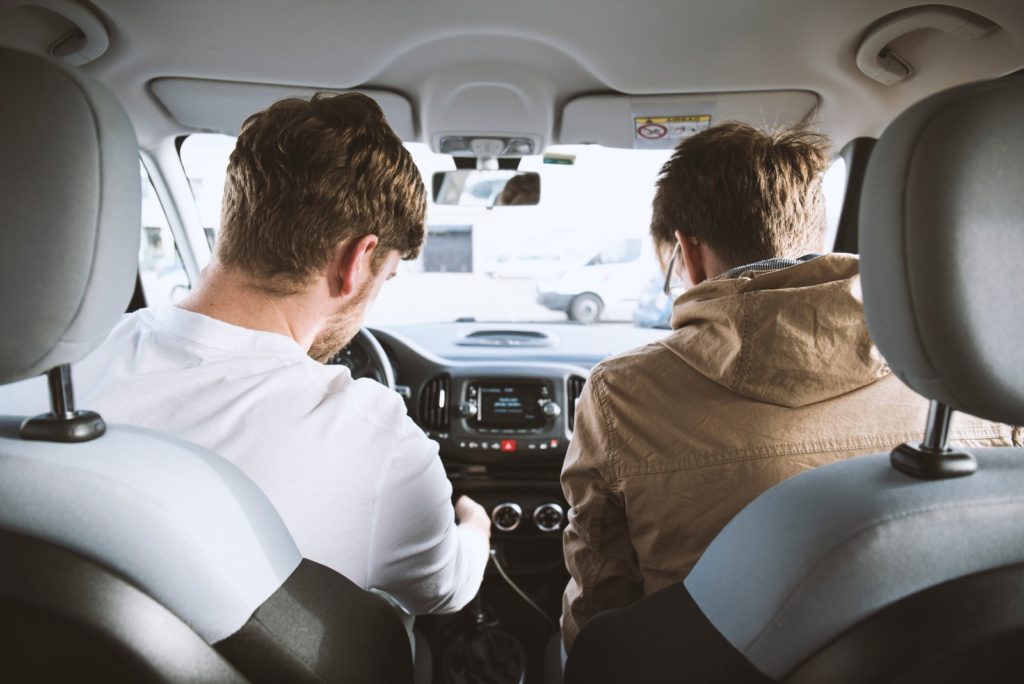
I didn’t actually need to use the restroom – I just used that reason to make sense of why I needed to ‘get out’. Over time it became a real sensation when originally I was just panicked about crowded confined spaces. The stress on my body damaged the way my digestive system functioned.
Needing to use the bathroom, I felt it was a stupid reason to be afraid and I felt like the weirdest-dumbest person, a huge burden to have to travel with, that the fuel to the fire were those feelings that validated the thoughts from the anxiety.
I was fully aware that it was simply anxiety, but the physical feelings would not go away, no matter how logical I knew they weren’t real. They felt real, but I knew I didn’t need to fear those situations.
Being in busy places that I wasn’t familiar with or waiting to get on a plane and fearing missing it because I have to use the restroom was a huge burden. Traveling was a horrible experience. I hated it and would panic at the thought of leaving home, sometimes even if the trip was planned months away.

After the first panic attack in 2008 I cried uncontrollably asking Clark “Why am I becoming crazy? Why do I feel this way? I don’t know how to stop it“. He got emotional with me, but we both had no clue what to do.
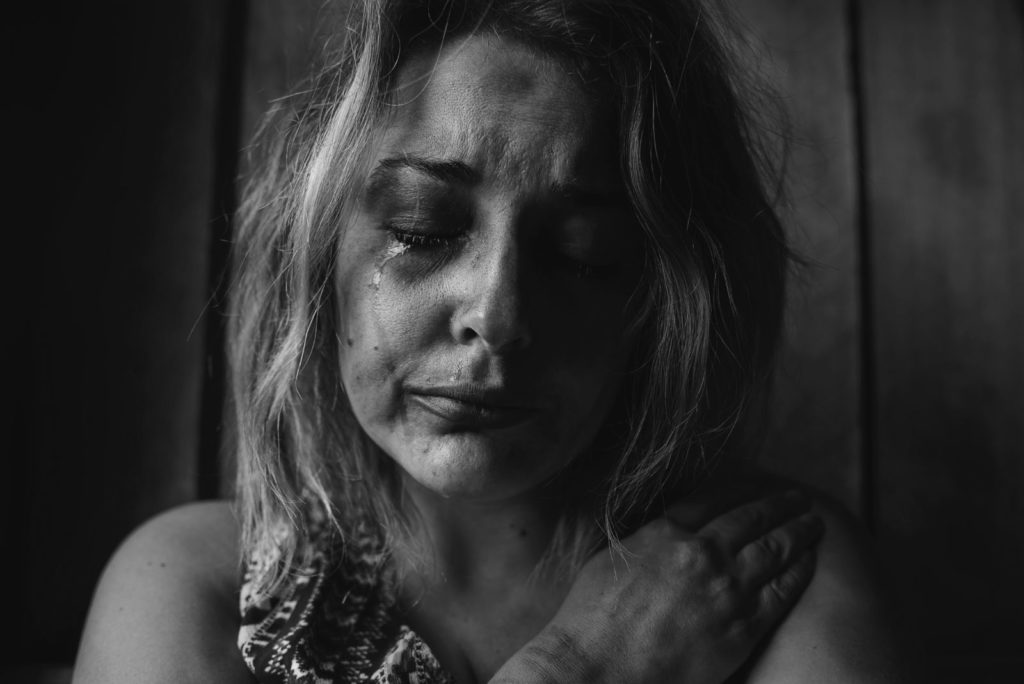
I quickly became housebound to where I’d freak out at the thought of just going to the store it got so bad. When I first started having anxiety attacks on a regular basis I would ask Clark to reassure me that we can stop whenever I needed to. That gave me a good start to leaving the house, or leaving or traveling to wherever was a ‘safe place’.
A safe place was home, a family’s house, or a place where I knew the environment and had been to multiple times. I needed him to prove it by stopping the first time I asked. After a while, he usually asked me if I could wait 5 more minutes, and then we graduated to longer amounts of time like 10, 15, 20, 30, etc.
One other way I would make progress was identifying where the bathrooms were whenever we arrived at our location. This gave me reassurance that I could escape to use the restroom. When I identified them, I immediately calmed down enough that I could proceed with the museum tour or whatever we were doing, without having to use the restroom. Or sometimes I would use the restroom while everyone was waiting and we had enough time. I’d also use the restroom before we left and this usually gave me a satisfying reason to remind myself that I don’t need to stop, I already ‘took care of it’, I’m fine.
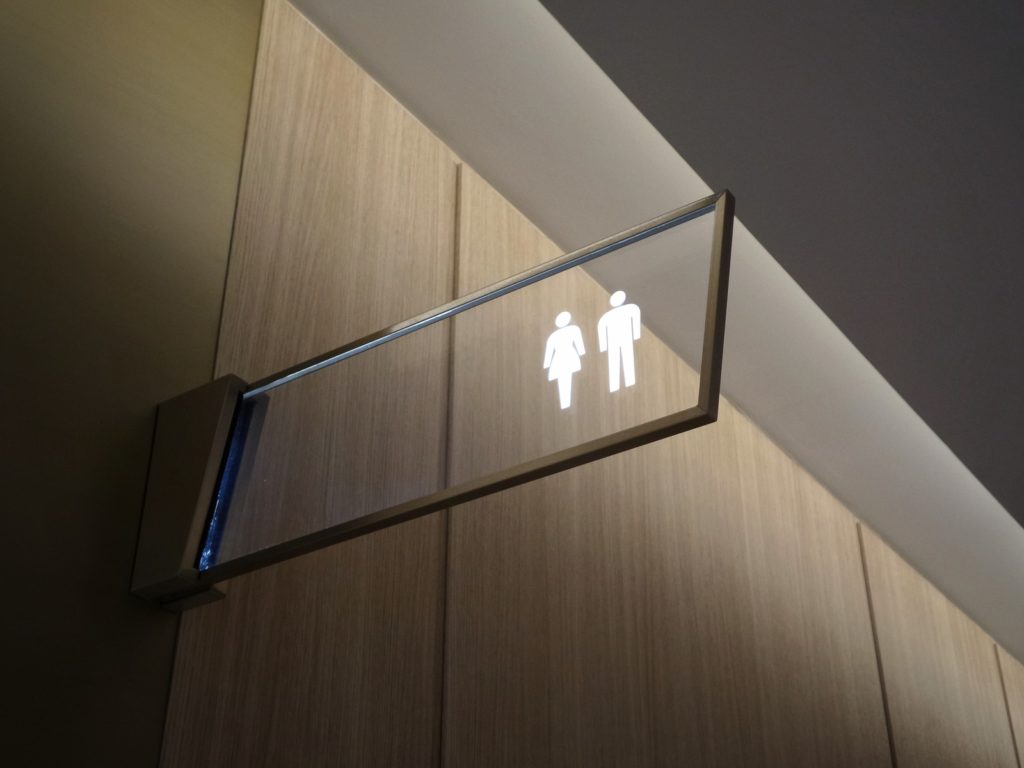
The trick for me was having specific tools that gave me reassurance:
- Clark reminding me that it’s OK, I can stop whenever I need to. I’m safe, and I felt safe with his kind, patient, reliable reassurance. He’d prove that he wasn’t upset with me by being kind and non-judgemental about stopping. It was harder when I’d travel with people who I knew or assumed didn’t understand my behavior.
- Use ‘if – than’ statements… I’d tell myself that “If I use the restroom before we leave, I won’t have to go until I arrive to our destination”. This worked better and better over time. When we arrived at the destination, I gave myself permission to calm down and feel safe as soon as I identified the bathrooms. I’d either use them or challenge myself not to – because I knew where they were and I knew I could escape when needed. This was hard to ‘reprogram my brain’, but it worked better and better with time.
- Using stress reducing objects like a fidget cube in my pocket or purse.
- Repeating affirmations taught through therapy. These helped me ‘reprogram my brain’.
- Knowing I always had a choice, I was never forced/pressured into doing anything that I didn’t feel comfortable with or didn’t want to do. If I wanted to challenge my comfort levels, I knew I had a safe option to go home early, change my mind, or face my fear a little longer. It was always my choice and not forced, pressured, or guilted into doing it.
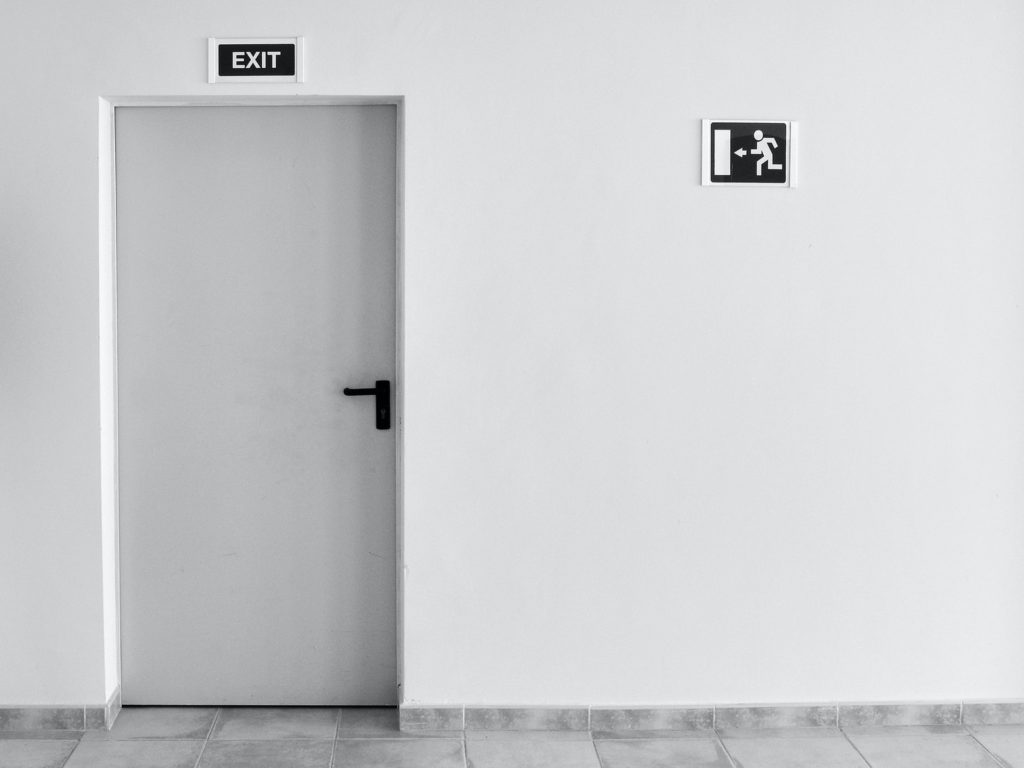
I always challenged myself, I always made myself uncomfortable by facing the fearful situations that would possibly bring on a panic attack, and over time I needed less and less of the tools because I became less and less afraid. I conquered those fears. The greatest help came from my husband who always began known stressful situations for me with words of reassurance and love, and he showed me he meant them so I could trust him when confronting my fears.

Please understand that those who are experiencing anxiety don’t like the way they feel. They feel embarrassed, and most of the time they understand how they should think and feel. They want to feel more “normal” and they want to be brave. So if you keep that in mind when responding to them, helping them feel, and know they are safe is key in helping them to overcome those fears and strengthen their ’emotional muscles’ to be motivated to work towards healthier ways of responding to emotional triggers. The healing will be on their timetable, not on yours.
If you found this article helpful, please feel free to share this link with your friends. If you have any personal experience with anxiety and have feedback to add on what has helped you, please add a comment below! 🙂 💚
